
Weighing your options regarding the implementation of the automated testing tool? How about taking a step further? Think about adopting a continuous testing model.
Software developers are constantly developing new ways of reducing waiting times and increasing efficiency during test automation. Continuous testing process is one of them. It is an innovative practice whose aim is, to put it shortly, lower the impact of failure and bring scores of test automation.
There are numerous continuous testing benefits. We have prepped an article to discuss the most significant ones to consider while looking for an ideal solution for your business needs.
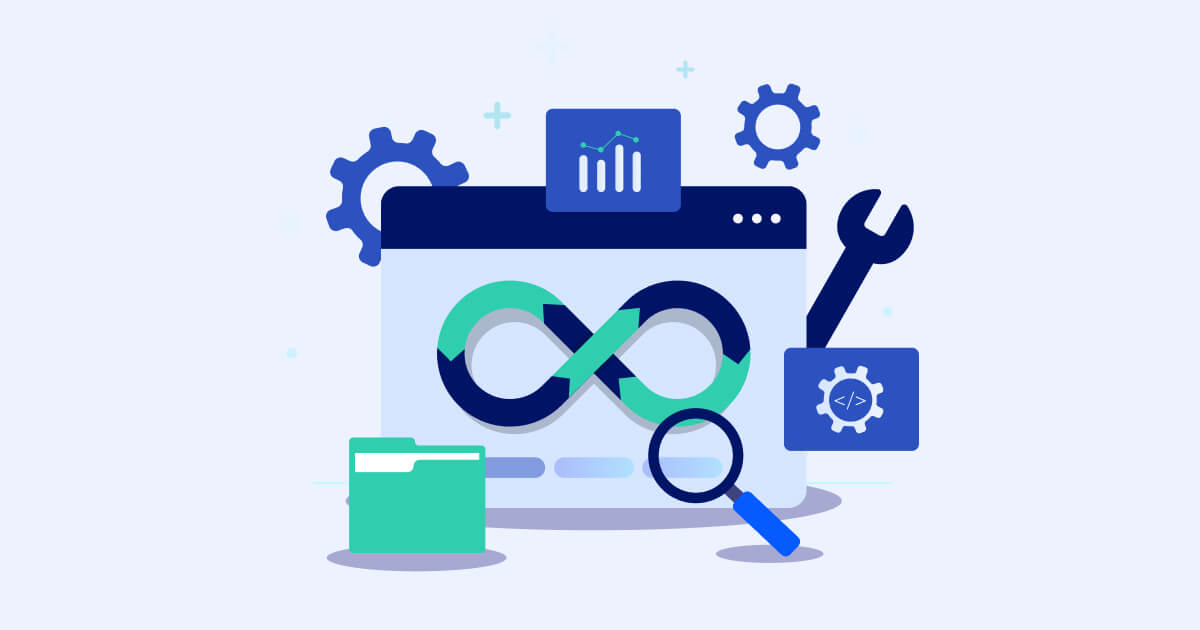
What is continuous testing?
The ideal software testing type? The strong candidate is continuous testing. It means that the product is assessed very early on, often and throughout the whole software development pipeline – Continuous Delivery (CD) process.
The continuous testing process uses test automation to make sure that all the teams involved receive immediate feedback on the testing process. Thanks to this, they can quickly react to mitigate any risks as and when they come up in the SDLC (software development lifecycle). Aso continuous testing means that teams can learn in depth about the product and what to do to increase its quality and reliability.
In the times of digital business transformation, clients are expecting faster delivery times which means faster software and product development. And delivery schedules are becoming so tight that software testing is more and more challenging. This is where continuous testing comes to the rescue. It is the best methodology to use if your focus is a high-quality end product and elimination of business risks.
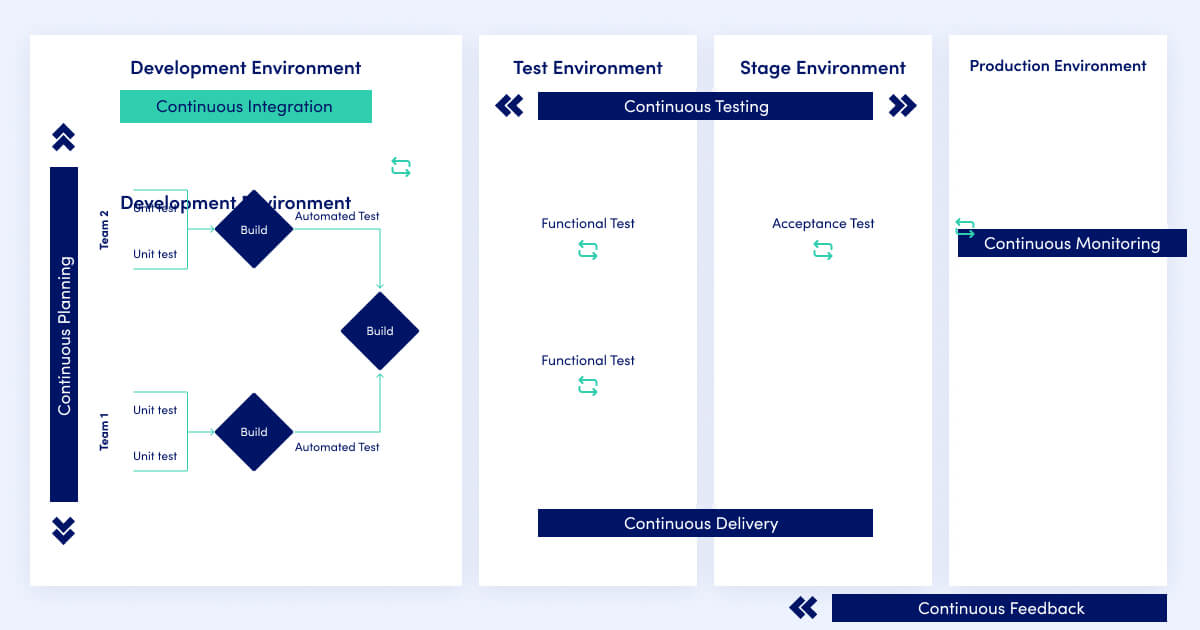
Why use continuous testing for your project? Because:
- Application architectures tend to be multi-layered, also distributed and complex. Testing requires multiple various protocols and different technologies even in a single functional process.
- With Agile and DevOps leading when it comes to software delivery model, release times are becoming tighter and tighter. This leaves developers for less and less time for test design and maintenance, and this negatively impacts the quality of test execution.
- The key issue for any business is User Experience. Even a minor glitch can discourage the customer and you can lose them to a competitor. This is the UX/ UI design has become a highly agile process. And the big challenge in this area is gaining and maintaining the right balance between the design requirement and whet the user experiences.
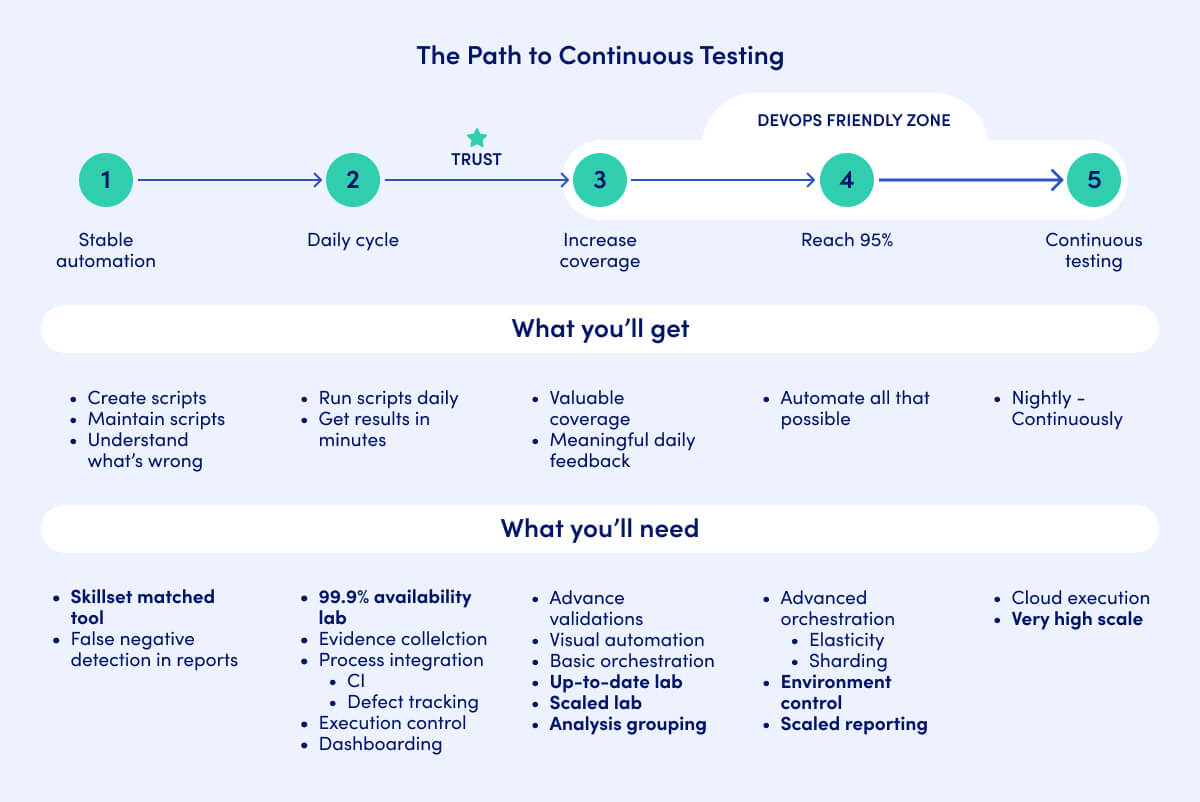
Continuous testing benefits
What are continuous testing benefits? We have listed the most important ones below:
- Risk-based feedback: continuous testing process ensures that software functionalities are all checked and ready before the release. Thanks to actionable feedback, both the development and management team are able to identify and fix any critical defects while the code is still being built and not when it is ready to go. Risk-based insights from automated testing tools ensure wider business risk coverage as compared to traditional manual testing. Instant feedback also greatly helps developers in making better design decisions. As for managers, they obtain all testing and software data that they need to assess the release (and release readiness).
- Testing the testing process: continuous testing covers a wide range of tests, thus generating valuable metrics over time regarding the testing process itself. The more tests you set up throughout the pipeline up till the very release, the more useful data you get. How the test are performing is crucial in an agile environment. Continuous feedback is inherent to continuous testing and it should include feedback on the test suites’ effectiveness throughout each of the test cycles. And one of the continuous testing benefits when it comes to the testing process is speed and responsiveness, too – the bottlenecks are spotted in due time, as long as all parties are involved. This, in turn, enhances gradually the testing approach.
- Immediate feedback: mentioned above already, continuous feedback is one of the most crucial continuous testing benefits. During this type of testing, you receive feedback at all stages – early on in the development as well as throughout all the testing phases. This not only saves a lot of time but also helps you to act proactively. And the earlier you catch a bug, the faster it get fixed. This is particularly helpful for test automation – once the developer commits an update to the code repository, the tests kick off automatically and you get instantaneous report results on those.
Continuous testing benefits include: faster product delivery, higher-quality code, risk-based feedback, reliable testing process and smarter release decisions.
- Smarter release decisions: continuous delivery, Agile and DevOps software models have resulted in shorter timeline do design, development and delivery of software updates. Releases occur more frequently as they aim to maintain the high quality of the developed product. In order to stay competitive and be able to cope with the accelerated releases processes, test automation is fundamental. A thorough understanding of the testing processes and results – which ultimately means knowing the business risks – can do more harm than good.
Thanks to continuous testing, risk-based feedback greatly helps developers with deciding when and how to release any new changes. With automated testing tools, companies can strike the right balance between the increased code complexity and the customer demand for a swifter delivery of their application. Among continuous testing benefits, this is an important consideration for companies.
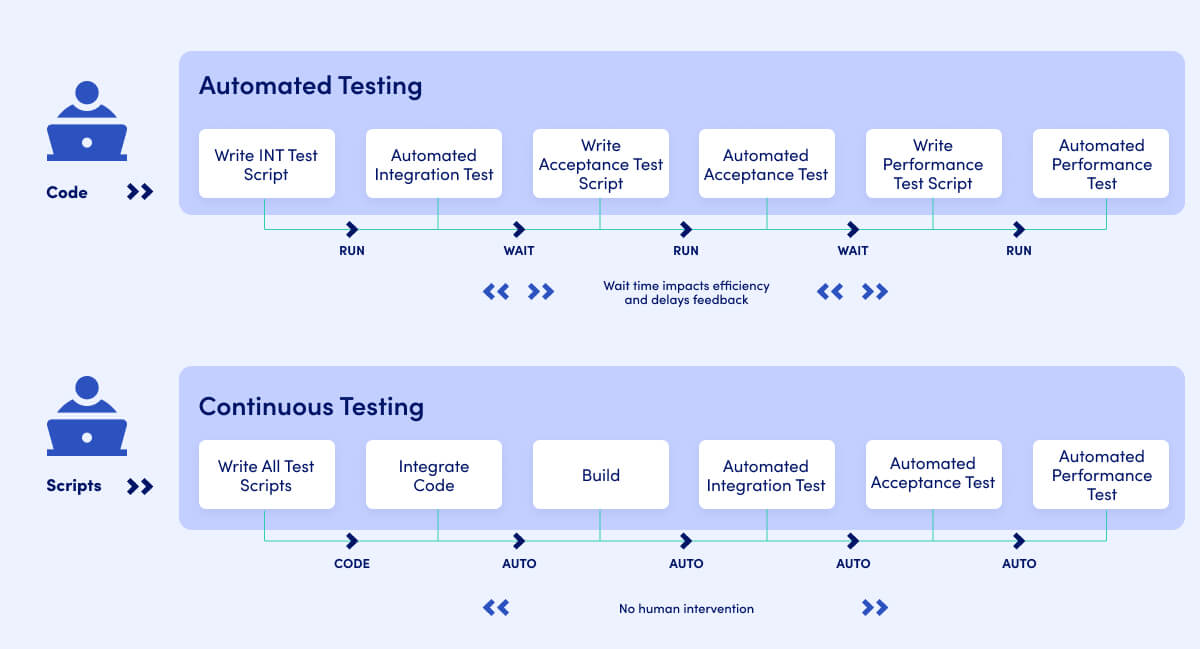
- More stable User Experience: one of the most characteristic continuous testing benefits (and features) is making sure that any flaky tests or faulty code do not reach the users and disrupt their user experience. The challenge for developers is to find the equilibrium between delivering new features (add-ons, etc.) while not disrupting the user experience. As software has become the dominant method of connecting businesses with their customers, poor, disrupted or even altered user experience is now deemed as a business failure. Continuous testing helps with preventing that any aspects of the user experience are impacted. Everything is accounted for when testing. That is what helps maintain a vendor’s reputation once the software is ready to be released.
- Team collaboration: one of the continuous testing benefits is also that the teams become more integrated. Involving each member in the development pipeline means that everyone works more efficiently and effectively together. QA testers are not siloed from developers anymore, rather they work hand in hand. This means that the software quality is assessed at all phases of the software development cycle (and not just at the very end prior to go-live). Teams by being better integrated are more knowledgeable and aware of each step in the pipeline.
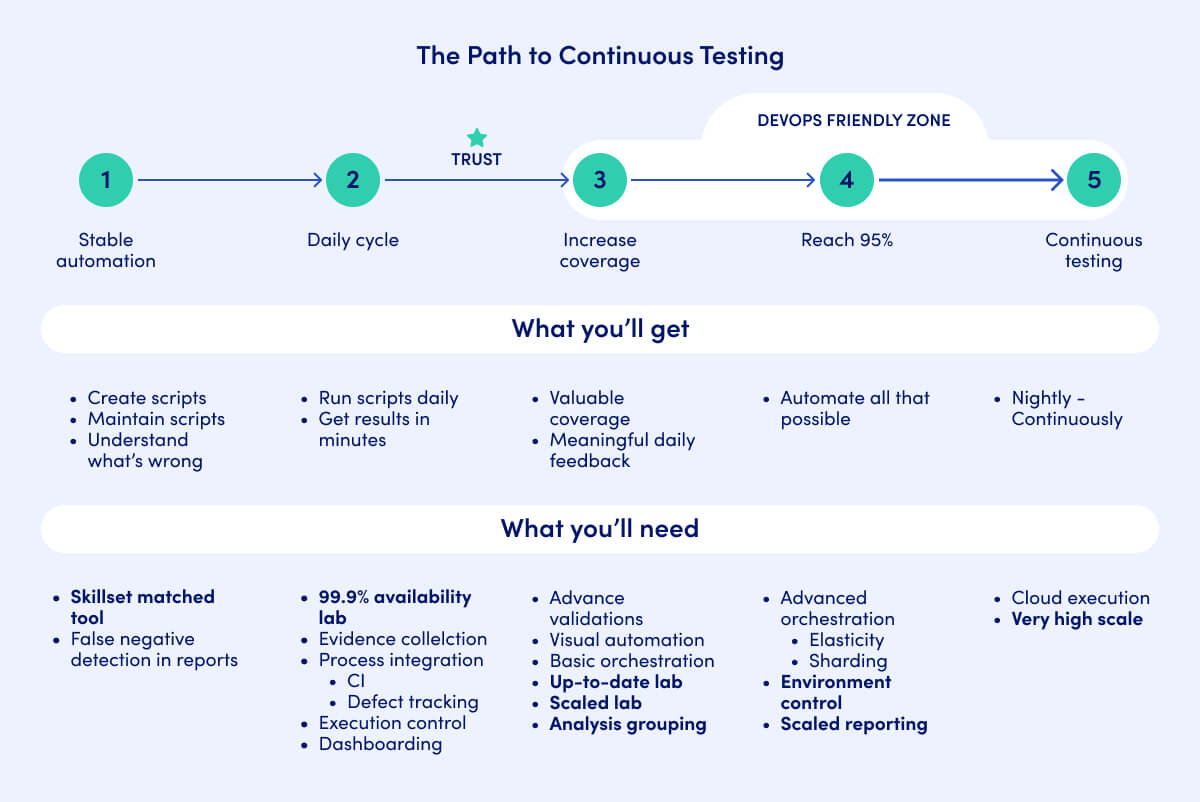
Now, let’s take a look at what the steps are when conducting continuous testing in DevOps:
- Establishing reliable test automation: sounds obvious but it needs to be done and checked. Stable automation means that all testing issues are fixed ad smart reporting differentiates between real and false negative defects. Make sure that the automated testing tool (preferably low- or no-code) matches your team’s skillset. If not, you will struggle a lot with achieving stable test automation.
- Running a daily cycle: now, you need to add a limited number of scripts into a repetitive pattern. Tests need to run (automatically and unattended at least once a day. They also need to be successful on more that one platform. You cannot move past this step unless your tests scripts are giving little to no false negatives. This proves to the organization that the automation process is reliable.
- Increasing test coverage: is the automation running reliably? Then, you are ready to increase the coverage. The ultimate goal is to reach valuable coverage numbers for both functional and non-functional test automation. This stage is also about focusing on low-maintenance but updated lab which should support scaling up. Again, you need a lot of concurrent sessions and smart reporting to get rid of the noisy data and distinguish it from the actual bugs. Mind you that anything not automated will only occur at the end of the cycle.

- Reaching 95% test coverage: the next step toward continuous testing is striving at 95% test coverage. Dozens of concurrent executions, huge amounts of data, screenshots, videos, etc. This is what happens at this point. In order to achieve 95% coverage,, you need more layers of environment control. Also, you might want to utilize such capabilities as: network visualization, sensor mocking and service virtualization. To run reliably from your CI – and, as a result, to meet the continuous delivery maturity goal – you need high-value and high-trust testing.
- Running continuous tests multiple times/ day: the final stage is the actual continuous testing. Here, the processes move from automated testing every day/ every night to multiple times a day. This means faster feedback, more accuracy and minimized risk. Continuous testing done this way give more flexibility during the development cycle and cuts the defects by approx. 50%.
